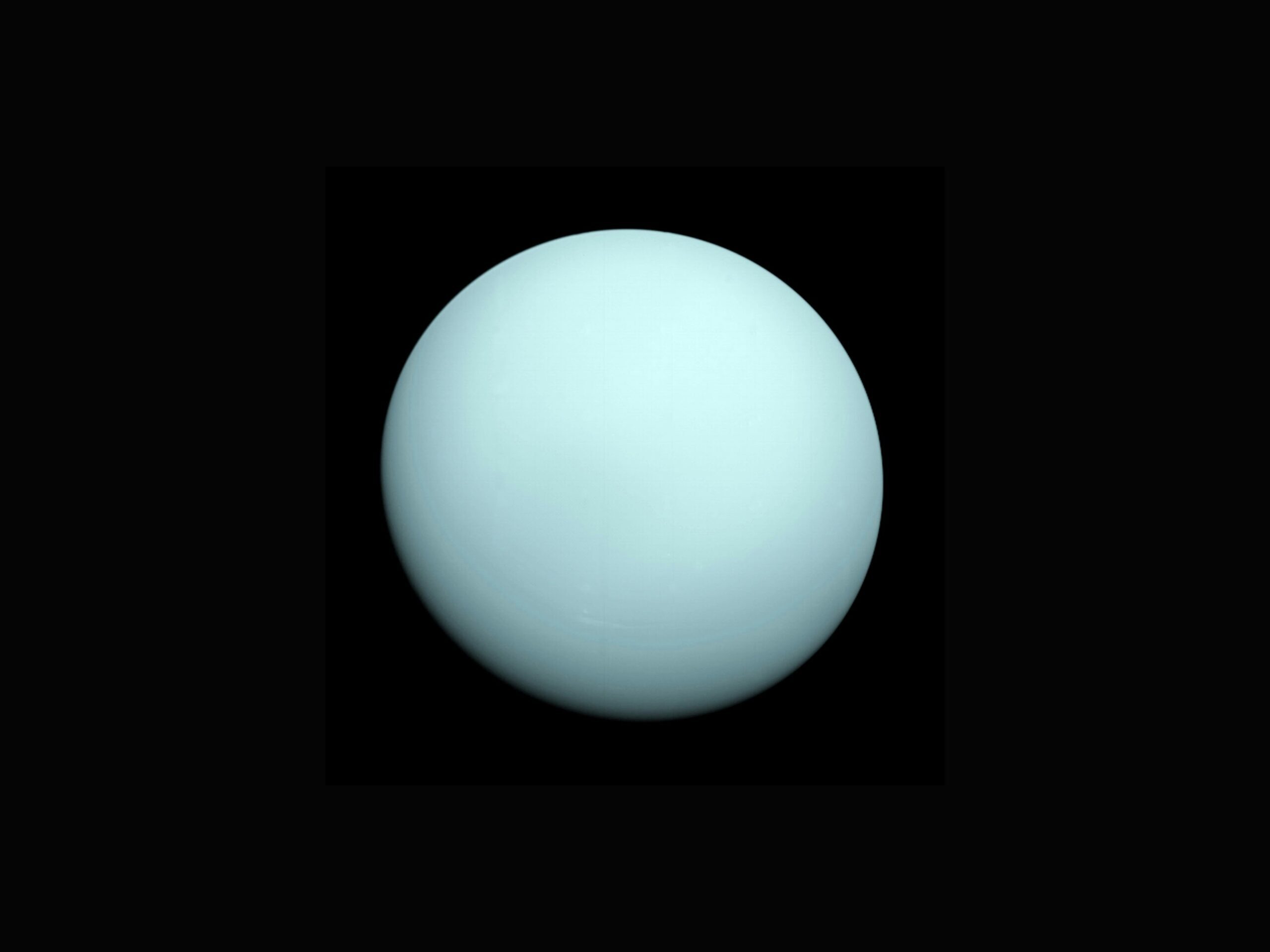11/25/2024
When the Voyager 2 spacecraft became the first and only mission to fly by Uranus in 1986, the data collected by the probe defined the way astronomers understood the ice giant for the next 40 years. However, it introduced new mysteries that have puzzled scientists ever since the historic flyby.
Uranus was always a bit strange. Located in the outer reaches of our solar system, the icy ringed planet is among the coldest of the lot. It is also tilted on its side, as if it had been knocked over, making it one of the strangest planets.
Now, a new study published in Nature Astronomy suggests Voyager 2 only happened to zoom by the distant planet on a particularly odd day. The current knowledge of Uranus may have been shaped by an unusual stellar coincidence. The detailed photos snapped by Voyager 2 indicated that the planet’s protective magnetic field, or magnetosphere, contained intense electron radiation belts and was devoid of plasma. But a new look at the data reveals that an intense, temporary increase in solar wind likely squished Uranus’s magnetosphere at the time of the flyby. This would have prevented sensors from detecting any plasma and would have filled the radiation belts with higher energy particles.
If the spacecraft had arrived just a few days earlier, the observations would have been more in line with the other outer planets. “The spacecraft saw Uranus in conditions that only occur about 4% of the time,” said lead author Jamie Jasinski, space plasma physicist at NASA’s Jet Propulsion Laboratory. These results indicate that Uranus remains largely misunderstood, given that basic knowledge of the planet stemmed from an extraordinary anomaly. While surprising, scientists state that these findings “make sense in retrospect”. As planetary scientist Fran Bagenal stated, “this is why we need to go back.”
These findings suggest it might be easier for future missions to search for oceans beneath the surface of Uranus’ moons. If missions orbit inside the magnetosphere, sensors may be able to pick up magnetic fields produced by salty water in response to the magnetic field around it. If Uranus’ magnetosphere is bigger than documented, the moons should be well within it. This makes them good sites to search for subsurface seas. As Dr William Dunn of University College London states, “the Uranian system could be much more exciting than previously thought.”
Moreover, the results of the study highlight the necessity of looking back at old data. As Dr Affelia Wibisono of the Dublin Institute for Advanced Studies states, there may be new discoveries hiding behind the old, “which can help us design the next generation of space exploration missions.” Reminding us that the discoveries we considered facts are ever-changing.
Fortunately, sending a dedicated mission to study Uranus in the future has become a priority for NASA. The planetary decadal survey conducted in 2022 recommends a dedicated Uranus Orbiter and Probe as the next NASA mission. The spacecraft would conduct an orbital tour of the ice giant during flybys and deliver a probe to explore the atmosphere. With this mission, scientists may find out if Uranus’ icy moons, once thought of as being dead worlds, might have the potential for life.

